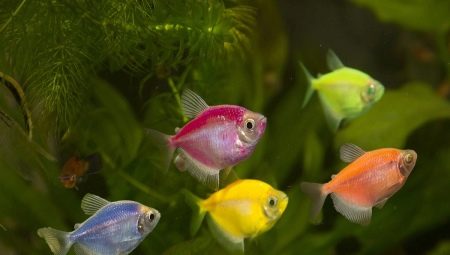Terence Glofish is a colored fish of the haracin family. Bred artificially and due to unusual bright colors is popular with many aquarists. The fish is quite unpretentious, it is easy to maintain and breed at home.
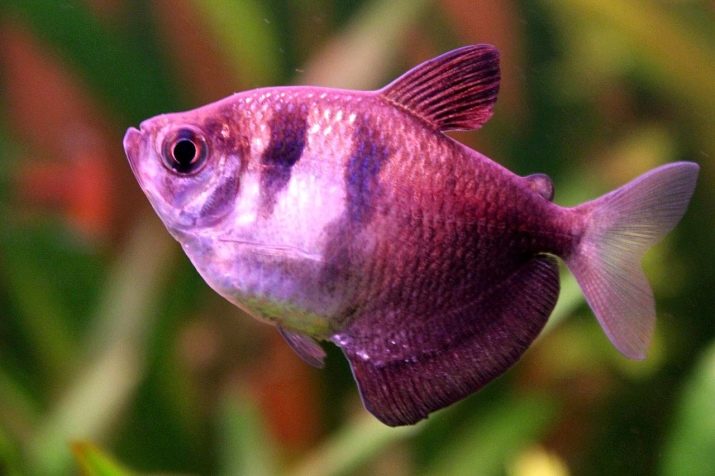
Description
Ternetia Glofish is a genetically modified fish. She owes her bright color to the genes of fluorescent marine inhabitants, which were included in the structure of her DNA. In contrast to ordinary olive-gray thorns, glofish fish are striking in their variety of shades.
In aquariums, individuals of red, pink, purple, orange, lilac, mint, purple and blue colors are found. From this assortment, each breeder will be able to choose fish to their liking.
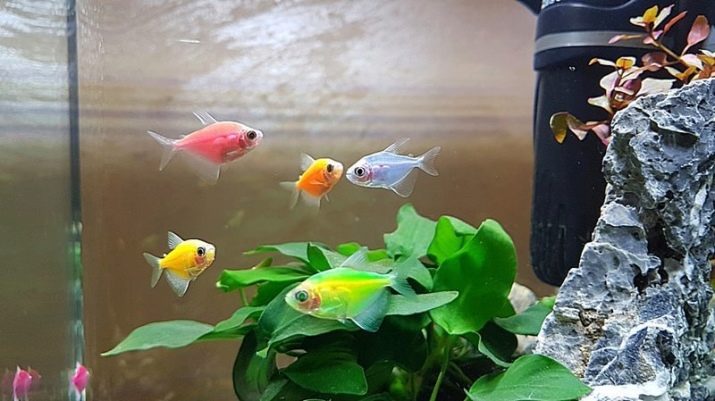
The thorns have a flattened lateral, rhomboid body. One can distinguish a female from a male by the following features:
- the female is usually larger and has a more rounded abdomen;
- in females the anal fin “skirt” is wider and more beautiful than in males;
- in males, the dorsal fin is sharper.
Sex determination becomes possible when the fish is 7 months old, by this age the differences are already clearly visible. The length of the thorns can grow up to 5 cm, but usually they are no more than 4 cm. The fish are active, like to swim in a flock in the middle layer of water.
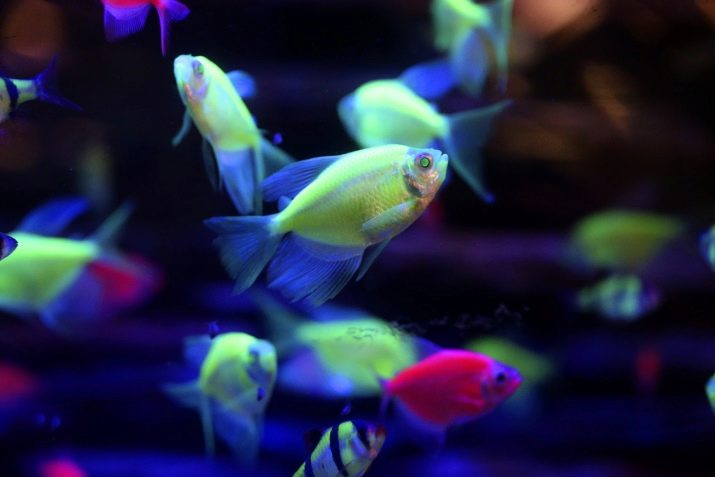
Life expectancy with good maintenance 3-4 years.
Compatible with other fish
The nature of the thorns is peaceful. They like to live with relatives, but they will also make friends with other types of aquarium fish:
- neons;
- by pecilia:
- mollies;
- cardinals;
- gourami;
- laliuses;
- scalaria;
- catfish corridor.
Despite their friendly disposition, thorns can pluck fins to neighbors. Therefore, their maintenance with long fin, veil fish, for example, with guppies, cockerels, and other species, is not recommended.
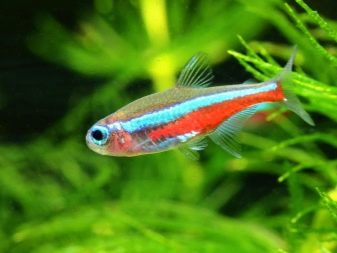
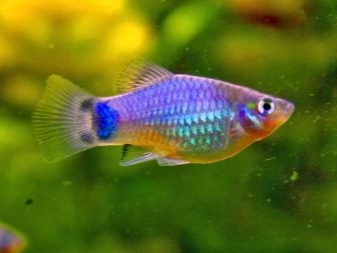

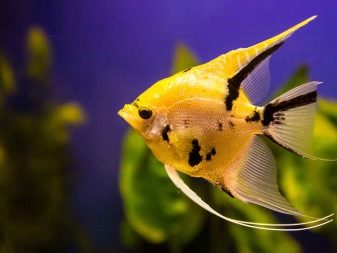
For the thorns themselves, the most dangerous neighbors are cichlids.
Predatory representatives of the aquarium world will drive, or even completely eat miniature handsome glo.
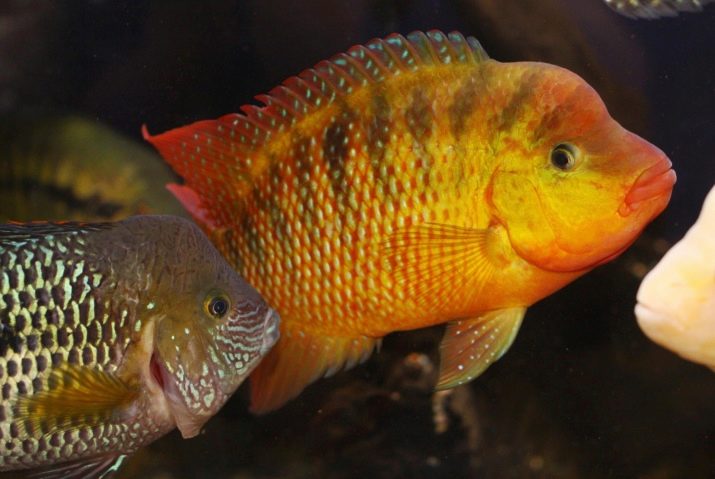
Maintenance and care
For the content of thorns, an aquarium of 40-50 liters is suitable. Such a volume is sufficient for a flock of 5-7 individuals. If it is planned to keep more fish, then, accordingly, the capacity is chosen more spacious. The aquarium should be of sufficient depth, the shape is preferably rectangular. Mandatory installation of aeration and filters. Fish are sensitive to water quality, its indicators should be within the following limits:
- acidity - 6.5–7 pH;
- stiffness - 6–17 ° dH;
- temperature - 25–28 ° C.
Glofish is more thermophilic than ordinary thorns. To raise the temperature using special aquarium heaters.
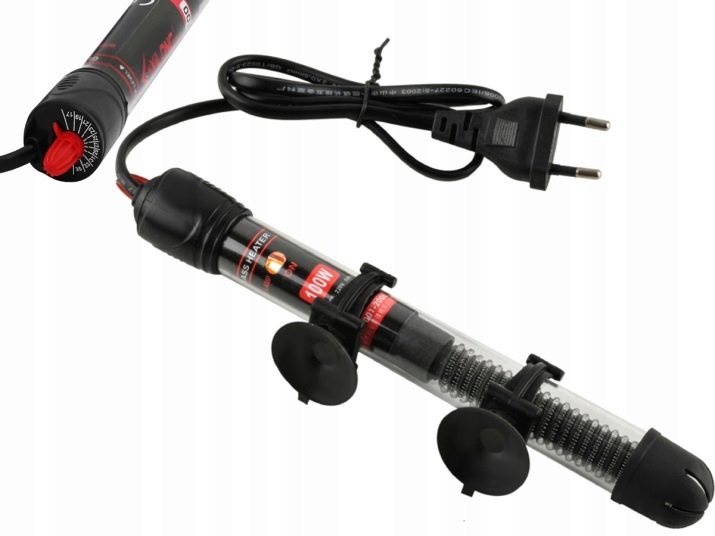
And if the water is too hard, you can add a little boiled. To determine the quality of water, special tests are used, they can be purchased at a pet store.
Be sure to change the water once a week. This will prevent the poisoning of aquarium inhabitants with harmful substances that are released during the life of the fish. Only 20–25% of the water is changed. A complete replacement is not required, this will disrupt the formed microclimate and cause stress in the fish. Pure, settled water corresponding to all parameters is poured into the tank.
Fish do not need special shelters; they like space. But for the formation of a favorable environment, the aquarium is planted with algae. You can choose any: in the background, place high rooting bushes, and in the front, create areas with Javanese moss.
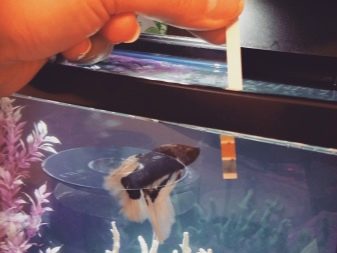
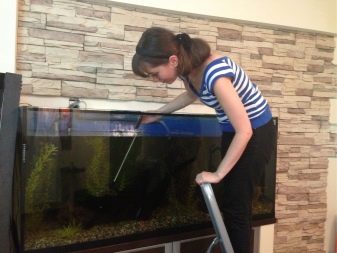
Be sure to hook up some snails, they will maintain the cleanliness of the aquarium.
There are no special requirements for lighting, it is only necessary to avoid direct sunlight. And yet, in order to emphasize all the advantages of the color of ternation glofish, it is worth choosing dim fluorescent lamps. At night, the lights must be turned off, daylight hours of water residents should not exceed 10 hours.
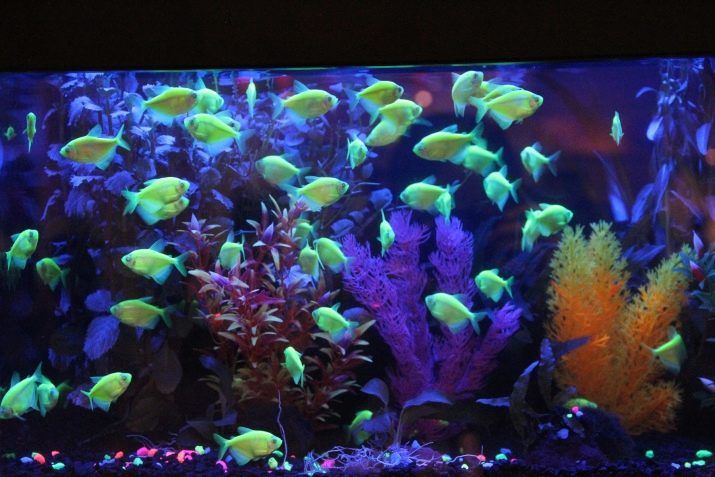
Feeding
The thorns are omnivorous, they will be happy to eat both live and specialized dry food. They, like most fish, are prone to overeating, so they give food 2 times a day in small portions. Of live food, it’s best for them:
- coretra - low-calorie mosquito larvae;
- bloodworm - nutritious high protein feed;
- artemia - small crustaceans rich in nutrients.
With pleasure they will also try food from the master's table - treat the fish with slices of fresh fish or minced seafood. Do not forget about plant foods. Lettuce and cucumber circles are a great snack between morning and evening feeding.

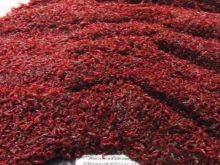
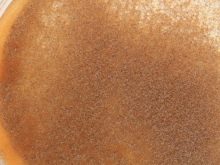
But it should be remembered that uneaten food pollutes the aquatic environment, so everything that the fish have not eaten, must be removed from the aquarium.
From dry feeds, many breeders choose the Tetra brand. This company produces high-quality balanced feed for different types of fish. For thorns, it is better to choose flakes or chips, since the pellets quickly sink, and these fish do not like to dig into the ground. Tetra has food recommended for all types of fish Tetra Rubin and TetraPro Color. The flakes contain a natural dye, thanks to which, after a week of feeding, the color of the fish will increase.
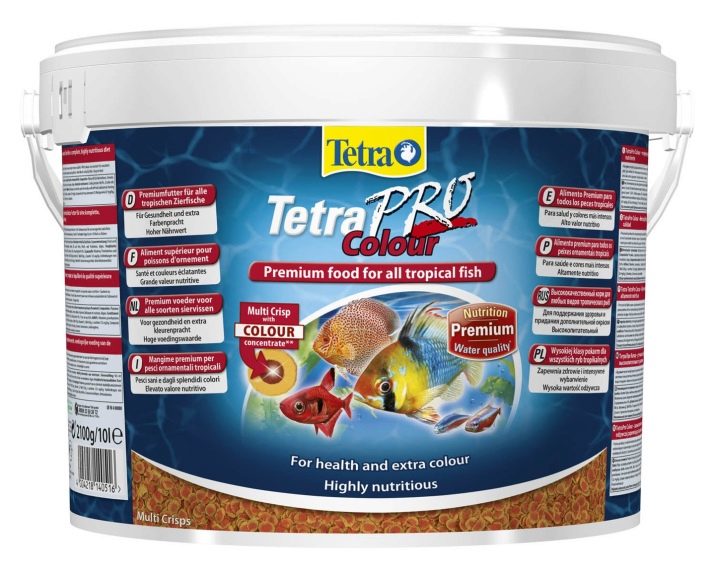
Breeding
To breed thorns, a separate container is allocated to the fish. Suitable aquarium with a volume of 20 liters. Glofish, although peace-loving fish, but parents starving after spawning can eat their own caviar, so it is advisable to install a special net at the bottom. The eggs will slip into the cells and will be inaccessible to adults. Instead of netting, you can use Javanese moss, its dense thickets will protect future fry.
Spawning is preferably equipped with a good aeration system. The installation of lamps is not required, the fish will have enough diffused daylight. Water indicators should correspond to the aquarium conditions in which the fish were kept. This will reduce stress when transplanted. It is only necessary to change the temperature, raising it by 2-3 degrees. This action perfectly stimulates the spawning of thorns.
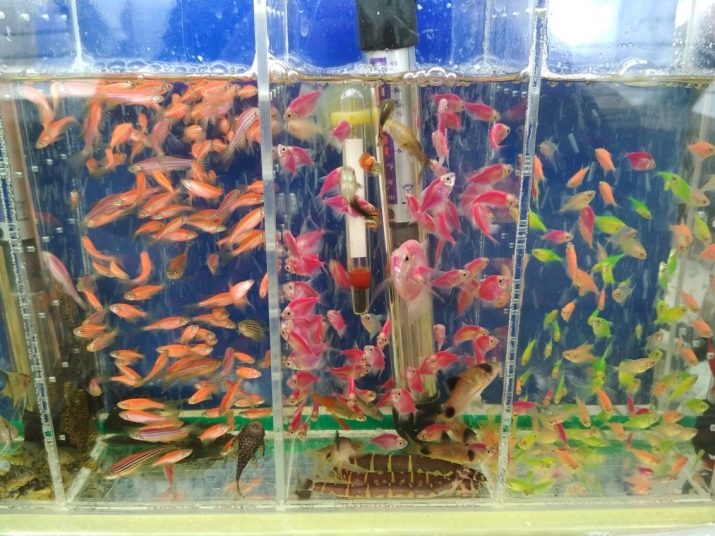
For successful breeding, 2 males and 1 female are required. Before being put into spawning, they are on a hunger strike for 1 day, and then fed to the fill with high-quality live food.
The spawning of fish is placed in the evening, and in the morning it will be possible to observe mating. The males swirl around the female, and she at this time spawns. Fish spawn about 2-3 hours. After completion of the process, the fish are immediately precipitated.
On the second day, tiny larvae appear from the eggs, they still do not swim and feed on the yolk sac. As soon as it resolves, babies should begin to feed. By this moment, full-fledged fry are already formed from the larvae, which actively swim around the aquarium in search of food. They are fed live dust, brine shrimp nauplii or special small-sized dry feeds.
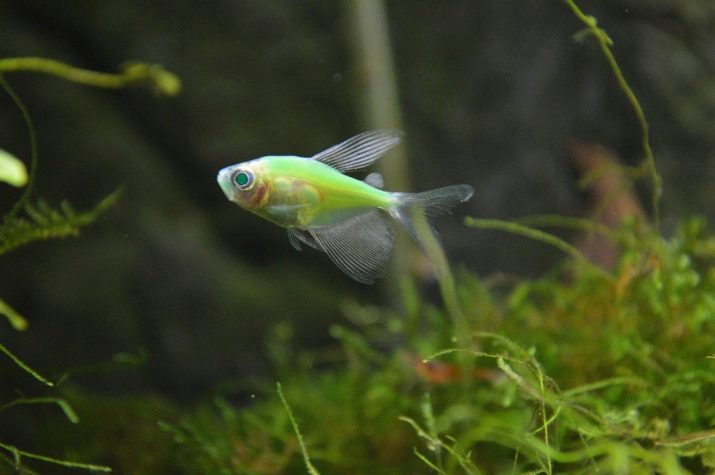
The fry take the coloring of their parents. Breeders often experiment by crossing individuals of different colors among themselves.
From this union, colored fry appear: some take on the color of the mother, and others the color of the pope, but a fry of a completely different shade may appear. therefore breeding thorns glofish very interesting. It is also worth noting that when these fish are crossed, some of the babies will be colorless.
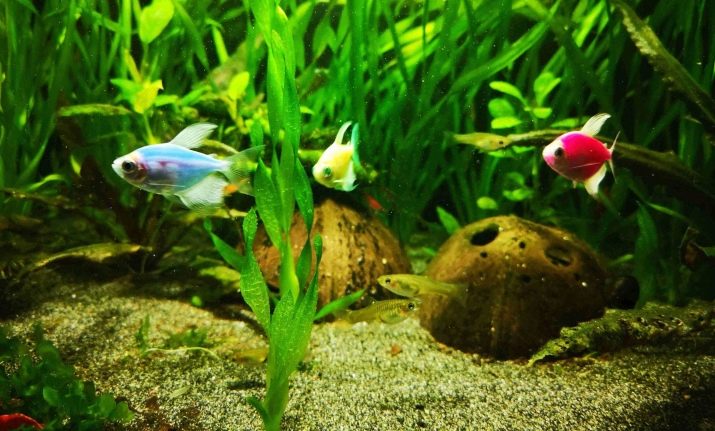
Possible problems
Ternetia is unpretentious and fairly hardy fish, but, like all living creatures, it is prone to disease. Consider the main problems that may arise.
- Hypoxia. In a crowded aquarium and in the absence of aeration, a fish can often swallow air from the surface of the water. This indicates a lack of oxygen.
- Oodiniumosis - An infection that can be introduced with plants or new fish. The main symptom is a golden yellow coating. For treatment, copper sulfate is used.
- Chlorosis - chlorine poisoning. It occurs when adding unstable tap water to the aquarium.
- Pleistophorosis - a dangerous disease that affects characin species of fish. The movements of the diseased individual become constrained, white patches appear on the abdomen. The disease is considered incurable, it is recommended to destroy all fish and conduct a thorough disinfection of the aquarium.
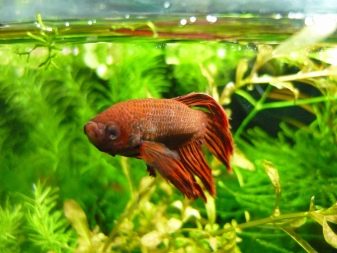

The best prevention of many diseases is to ensure proper care for their pets: maintaining the cleanliness of the reservoir, balanced feeding and monitoring the quality of water.
Healthy glofishets are active, they are bright, beautiful. An aquarium with these fish will be a wonderful decoration of the interior.
See how the third glofish looks like, see below.
